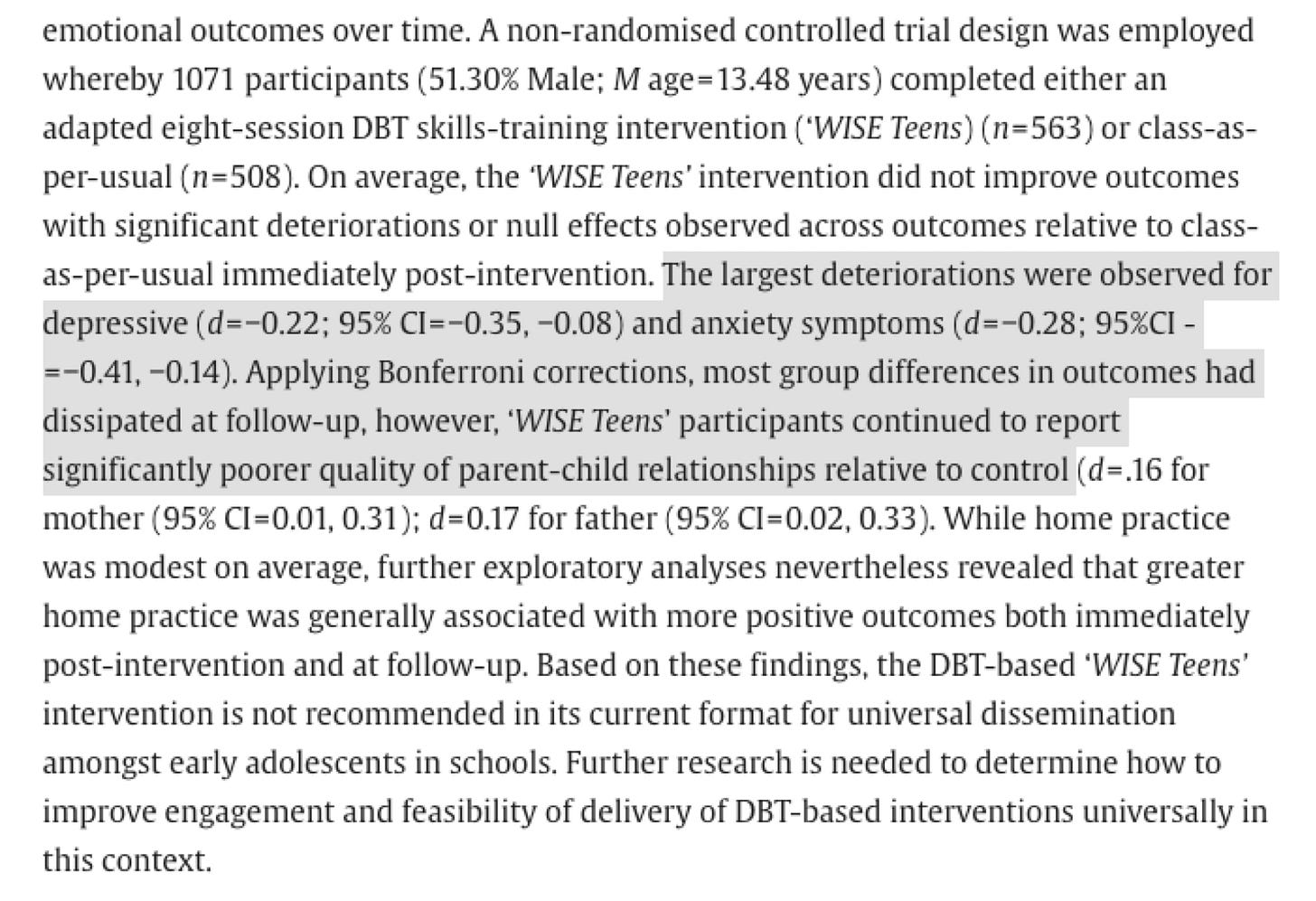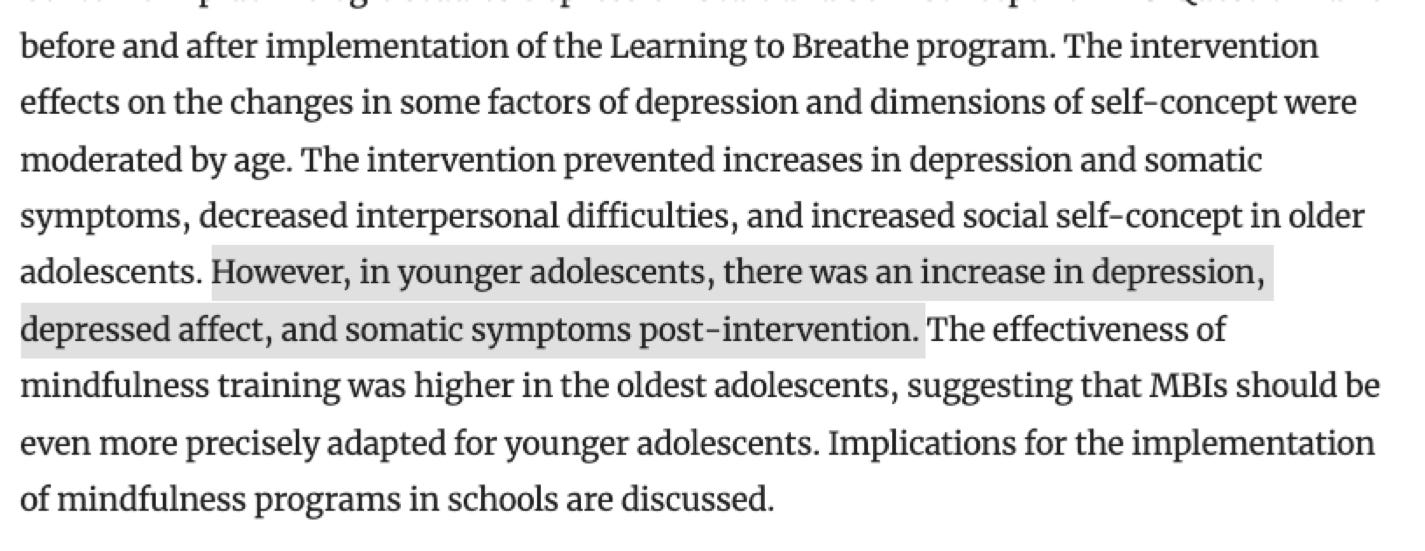The Tail-Eating Snake of School Mental Health
Just how much are mental health prevention efforts in K12 contributing to the rise in mental health problems in kids?
It turns out converting schools into mental health centers is likely contributing to the reported increase in mental health problems in kids, rather than mitigating them.
Researchers call this phenomenon “prevalence inflation.”
“Prevalence inflation” occurs when bringing attention to mental health makes some people think normal feelings of distress are actually mental health problems. This increases their symptoms, exacerbating the issue rather than alleviating it.
The theory argues that, like a serpent swallowing its own tail, mental health efforts in schools increase mental health problems, compelling more mental health curriculum, programs, personnel, and interventions… and so the cycle repeats and expands, repeats and expands, indefinitely.
Around and around it goes, like this:
Researchers have found that simply learning about psychiatric concepts and language may increase mental health problems in young people.
Studies of “universally-applied” mental health preventative programs in schools — programs that target whole school populations rather than only select individuals — show worse mental health in kids after the intervention. For example, teenagers in a “WISE Teens” program had worse mental health and worse relationships with parents after taking part:
Cognitive-Behavioral Therapy (CBT), where individuals talk about their feelings, emphasizes participants’ awareness of internal positive and negative self-talk patterns and behavioral habits and, ideally, helps them develop effective problem solving strategies.
But this study demonstrates that teaching adolescents CBT principles in school-based interventions leads to an increase in internalizing symptoms.
This is a harming, not helping, effect.
Likewise, “mindfulness” lessons in schools lead to an increase in depressive symptoms in adolescents who have elevated levels of mental health problems at baseline, according to a recent large-scale trial.
This study on a mindfulness intervention with 13- to 21-year-olds shows increased depression and physical symptoms in the younger adolescents who took part:
Qualitative studies also indicate that mental health interventions lead to increased distress in some people.
Adolescents who completed a school program based on talk therapy (CBT), designed to prevent depression, said that trying to identify negative thoughts in class made them feel “low,” even when they had initially felt positive.
One participant said: “I mean, it's like you start thinking like that … that you have low [thoughts] because they bring it up all the time, negative thoughts and that you should change that all the time. But those who sort of have positive [thoughts], they start thinking negative in the end.”
This research indicates that at least some individuals experience an increase in mental health symptoms as a result of learning about these symptoms.
Relatedly, there is experimental evidence which shows just how influenced people are by the inherent suggestiveness of psychotherapeutic practices. Simply by covertly telling people they are experiencing symptoms causes them to subsequently report more of those symptoms:
In one study, half of participants were informed (inaccurately) that they had elevated blood pressure and half were told their blood pressure was in the normal range. Ten minutes later, the group who received the false information reported that they experienced more symptoms commonly associated with high blood pressure (e.g., headaches, feeling flushed), relative to the group who were told their blood pressure was normal.
In another study, participants were asked to report the degree to which they experience certain symptoms, such as low mood and fatigue, and the researchers then shared covertly inflated scores with half of the participants. One week later, participants who had not noticed this artificial inflation in their scores reported higher symptoms relative to their baseline score, compared to those who did not have their symptoms artificially inflated.
These findings are relevant for understanding potential harmful consequences of mental health awareness and prevention efforts because, almost by definition, awareness efforts educate people about potential symptoms and encourage them to notice and report them.
If people are repeatedly told that mental health problems are common and that they might experience them – and this is especially true for impressionable young people who frequently receive mental health information in schools – then it makes sense that they might start to interpret any negative thoughts and feelings through a psychological, mental health lens.
For some individuals, the psychoeducation aspect of interventions (learning to recognize and label their distress or disorder) or psychological therapy is helpful, and enables them to access vital support and treatment. But if there is evidence that learning about mental health problems sometimes causes or exacerbates distress, then it is a reasonable (and urgent) hypothesis that exactly the same phenomenon is taking place on a much wider scale as a result of mental health awareness and prevention efforts in schools.
There is also evidence of possible harm from group interventions to help teenagers with behavior problems. Some behave worse, drink more and take more drugs at the end of intervention than at the start of it (possibly due to spending time with peers with similar habits).
Reviews of studies have found mixed findings on effectiveness of universal mental health interventions. But one study that found positive effects cautioned that this was only for clinician-led interventions – there were no positive effects for mental health programs delivered by teachers.
Given all these findings, it can be concluded that universally applied interventions which aim to boost mental health or prevent distress before it happens aren’t necessarily positive or even neutral. Programs in schools which address mental health at the very least require stringent protocols administered by licensed, regulated experts in the fields of mental and behavioral health in order to avoid negative impacts.
Better yet, these efforts should be abandoned rather than risk harm.
Since it is likely mental health prevention efforts in schools — in the form of classroom Social Emotional Learning lessons, talk therapy sessions facilitated by untrained teachers, and the like — are making kids worse rather than better, it’s easy to conclude that in this case, doing nothing is better than doing something.
The snake eating its own tail illustrates the relationship between prevalence inflation and mental health awareness efforts, which is bidirectional. This means that as the prevalence of mental health problems increases, agencies understandably respond by disseminating more awareness-raising information to help individuals identify difficulties and access support. But these efforts themselves can lead to an increase in prevalence rates via the mechanisms described above.
In addition, the relationship between the two constructs is not only circularly repeating, but escalating: As prevalence rates increase, awareness efforts increase in response, but then prevalence rates increase further as a result and the cycle continues — an infinitely repeating and expanding ouroboros.
Are there studies that show school-based mental health programs are effective at helping kids?
There are. But, unsurprisingly, most of the studies on the effectiveness of school-based mental health programs in the U.S., when subjected to risk-of-bias analysis, have been found to be unreliable and even manipulated specifically for the purpose of advancing school counseling programs.
This 2019 study concludes: “Considering unclear risk of bias and probable small study effects for anxiety, we conclude there is little evidence that educational setting-based interventions focused on the prevention of depression or anxiety are effective.”
It’s time to terminate the serpent.
#KIDSFIRST










Great reportage. Abigail Shrier wrote about this too
Informative